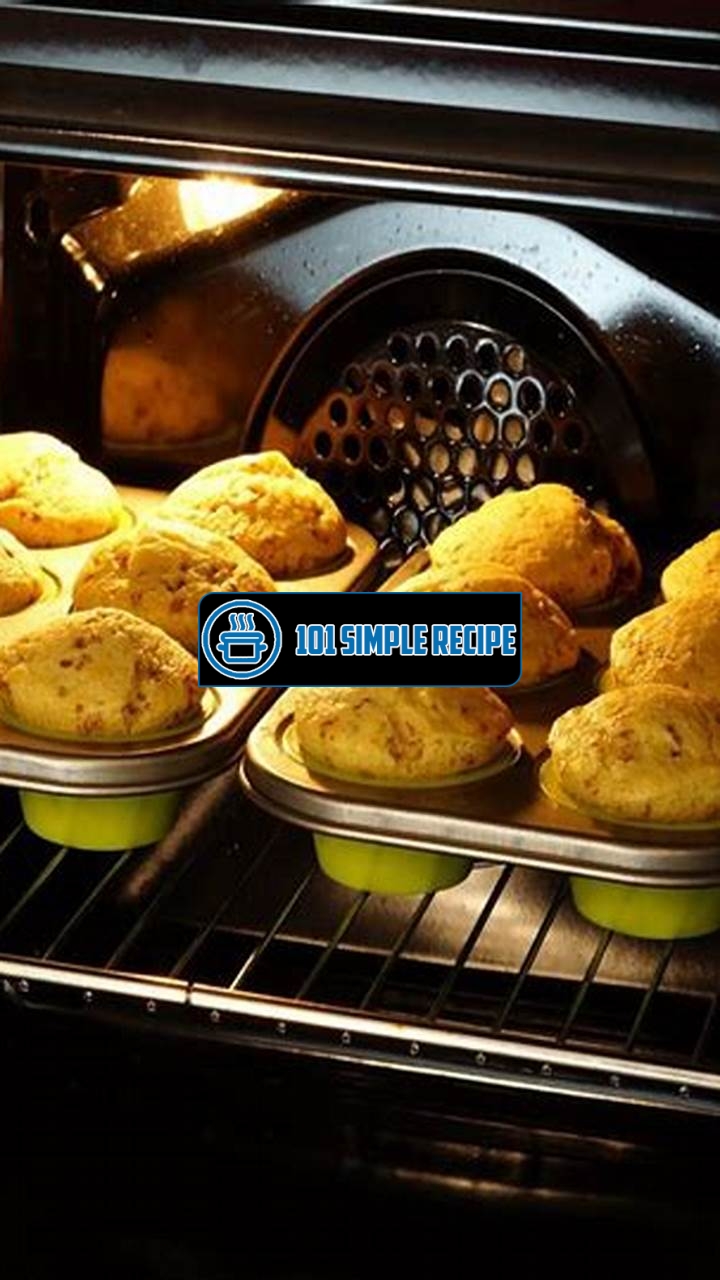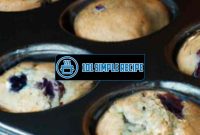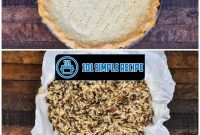Are you tired of your baked goods coming out unevenly cooked or not quite the right texture? Look no further than the power of convection! Convection baking is a technique that has been gaining popularity in recent years for its ability to produce perfectly even and consistent results. But is convection really better for baking? In this article, we will unlock the secrets of convection baking and explore whether it is the secret to achieving bakery-quality treats in your own kitchen. Get ready to discover the benefits of convection baking and take your baking game to the next level!

Introduction to Convection Baking
Discover the basics of convection baking and its potential benefits for your baked goods.
What is Convection Baking?
Convection baking is a cooking technique that utilizes a fan to circulate hot air in the oven. This creates a consistent temperature throughout the oven, resulting in faster and more even cooking. The fan helps to distribute heat evenly around the food, ensuring that it is cooked thoroughly from all sides. This technique is particularly beneficial when it comes to baking because it can produce perfectly golden and well-risen baked goods.
️ One of the key factors that sets convection baking apart from conventional baking is the airflow. The fan in a convection oven continuously pushes the heated air around the food, which helps to eliminate hot and cold spots. This means that your baked goods will cook evenly, regardless of their position in the oven.
How Does Convection Baking Work?
Convection ovens have a heating element placed at the bottom, just like conventional ovens. However, they also have additional heating elements and a fan. The heating elements are responsible for generating heat, while the fan circulates the hot air.
The heated air is blown onto the food, creating a constant stream of hot air that surrounds it. This continuous flow of hot air allows the food to cook faster than in a conventional oven. The fan also helps to remove moisture from the food’s surface, resulting in a crispier outer layer.
Convection baking is not limited to just one mode. Some ovens offer multiple convection settings, such as “convection bake,” “convection roast,” and “convection broil,” each of which uses the fan in different ways to create specific cooking effects.
Pros and Cons of Convection Baking
Like any cooking technique, convection baking has its pros and cons. Let’s take a look at some of them.
Pros:
1. Faster Cooking: Convection ovens can reduce cooking time by up to 25%, allowing you to bake more efficiently.
2. Even Baking: The circulation of hot air ensures that your baked goods are cooked evenly and consistently.
3. Improved Texture: Convection baking can create a crispy exterior while maintaining a tender and moist interior.
4. Energy Efficiency: Since convection ovens cook food faster, they use less energy compared to conventional ovens.
Cons:
1. Adjusting Recipes: When using a convection oven, you may need to adjust recipes and cooking times to account for the faster cooking process.
2. Drying Out: Some delicate recipes, like custards or soufflés, may not fare well in a convection oven as the circulating air can dry them out.
3. Uneven Browning: In certain cases, the airflow may cause uneven browning on the top or bottom of your baked goods.
In conclusion, convection baking is a technique that utilizes the power of hot air circulation to produce evenly cooked and beautifully browned baked goods. While it offers several benefits, it’s important to consider the specific recipe and adjust accordingly. Experimenting with both convection and conventional baking can help you find the perfect approach for each recipe. Happy baking!
Convection ovens are widely used in baking, and White Castle burgers recipe is a popular choice for many people. But is convection really better for baking? Let’s explore the benefits and drawbacks of using convection ovens for baking.
The Science Behind Convection Baking
Convection baking is a unique and effective method that harnesses the power of air circulation to create perfectly baked goods. By understanding the scientific principles behind convection baking, you can unlock its secrets and elevate your baking game.
Understanding Heat Transfer
Heat transfer is a fundamental concept in baking. Convection baking relies on the principle of convection, which involves the transfer of heat through the movement of fluid particles. In this case, the fluid is the air inside the oven.
When you bake using the conventional method, heat is mainly transferred through conduction, where the heat from the oven walls is directly conducted to the food. However, convection baking takes it a step further by introducing the element of air circulation.
Convection ovens have a fan that circulates hot air throughout the oven cavity. This circulating air ensures even heat distribution, eliminating any hot spots that may occur with conventional baking. As a result, your baked goods are cooked more evenly and have a better texture.
Fun fact: Did you know that convection ovens can cook food faster than conventional ovens due to their efficient heat distribution?
Effects of Air Circulation on Baking
The air circulation in convection baking plays a crucial role in the outcome of your baked goods. As the hot air circulates around the food, it helps to rapidly evaporate moisture from the surface. This leads to quicker browning and a crispier exterior.
Furthermore, the movement of hot air aids in creating a lighter and fluffier texture. It allows for better leavening, as the rising agents in your baked goods are evenly distributed throughout the batter or dough. This is particularly beneficial for delicate items like soufflés and pastries.
Pro tip: If you prefer a softer and more moist result for your baked goods, you can adjust the cooking time or temperature in your convection oven to achieve the desired texture.
How Convection Affects Different Types of Baked Goods
The impact of convection baking varies depending on the type of baked goods you are preparing.
For yeast-based bread, convection baking helps to create a beautifully golden and crisp crust while maintaining a soft and tender interior. The improved air circulation allows the bread to rise evenly, resulting in a uniform shape and texture.
Baking cookies with convection heat ensures that they are evenly baked, with a slightly caramelized exterior and a chewy center. The combination of air circulation and quick heat transfer allows the cookies to spread evenly and develop a delightful texture.
Did you know? Convection baking is especially beneficial for cooking multiple trays of cookies at once, as the circulating air helps to mitigate any discrepancies in heat distribution between the trays.
When it comes to delicate pastries, convection baking provides a gentle and evenly distributed heat, allowing them to rise and set properly without becoming overly browned or heavy.
In conclusion, convection baking offers many advantages over conventional baking methods. By harnessing the power of air circulation, it enhances heat transfer and creates beautifully baked goods with even textures and consistent results. So, next time you fire up your oven, consider giving convection baking a try and unlock the secrets to better baking!
Advantages of Convection Baking
When it comes to baking, using a convection oven can bring a range of benefits that can improve your baking experience. Convection baking utilizes a fan to circulate hot air throughout the oven, resulting in even baking and browning, shorter cooking times, and improved efficiency and energy savings.
Even Baking and Browning
One of the key advantages of convection baking is the ability to achieve even baking and browning. The circulating hot air ensures that the heat is evenly distributed around the food, eliminating any hot spots that can lead to unevenly cooked dishes. This means that your cakes, bread, and cookies will have a consistent texture and color throughout, resulting in a professional-grade bake every time.
Shorter Cooking Times
Convection ovens can significantly reduce your cooking times, making them a valuable asset in a busy kitchen. The hot air circulation allows for faster heat transfer to the food, resulting in accelerated cooking times. This can be especially beneficial when baking large batches or when you’re short on time. Whether you’re baking a roast, casserole, or a batch of muffins, you can expect your dishes to be cooked up to 25% faster compared to conventional baking.
Improved Efficiency and Energy Savings
Aside from the advantage of shorter cooking times, convection ovens are also more efficient when it comes to energy consumption. The even heat distribution and faster cooking result in energy savings, as you can achieve the same results using lower temperatures. This translates to lower electricity bills and reduced environmental impact, making convection baking a more sustainable choice.
Additionally, the shorter cooking times can also help keep your kitchen cooler, especially during hot summer months. The reduced cooking duration means less time with the oven on, which can contribute to a more comfortable cooking environment. ️
In conclusion, convection baking offers significant advantages over conventional baking methods. It provides even baking and browning, shorter cooking times, and improved efficiency and energy savings. So, if you’re looking to take your baking skills to the next level, investing in a convection oven might just be the secret ingredient you need! ✨
Pitfalls of Convection Baking
When it comes to baking, convection ovens have gained popularity in recent years. They offer a faster and more efficient way to bake your favorite treats. However, there are some pitfalls and challenges associated with convection baking that you should be aware of. In this article, we will explore the limitations of convection baking and provide insights on how to overcome them.
Uneven Rising and Baking
One of the main challenges with convection baking is the potential for uneven rising and baking. In a conventional oven, the heat comes from the bottom, resulting in even heat distribution. However, in a convection oven, the heat is circulated by a fan, which can lead to uneven rises and bakes.
⚠️ It is important to keep an eye on your baked goods and rotate the pans during baking to ensure even rising and browning.
Potential for Over-Drying
Another pitfall of convection baking is the potential for over-drying. The circulating hot air in a convection oven can quickly dry out your baked goods, resulting in a dry and crumbly texture. This is especially true for delicate pastries and cakes.
⚠️ To avoid over-drying, you can reduce the baking time or lower the oven temperature by about 25 degrees Fahrenheit when using convection mode. Additionally, covering your baked goods with foil or a lid can help retain moisture.
Modifying Recipes for Convection Baking
When using a convection oven, it is important to make adjustments to your recipes to account for the differences in heat distribution and airflow. Convection baking typically requires shorter cooking times and lower temperatures compared to conventional baking.
⚠️ When modifying recipes for convection baking, reduce the oven temperature by about 25 degrees Fahrenheit and shorten the baking time by around 25%. Keep a watchful eye on your baked goods as they may cook faster than expected.
In conclusion, while convection baking offers many advantages, such as faster and more efficient baking, there are some pitfalls that you should be aware of. Uneven rising and baking, the potential for over-drying, and the need to modify recipes are some of the challenges associated with convection baking. By understanding these limitations and making the necessary adjustments, you can unlock the secrets to successful convection baking.
Tips for Successful Convection Baking
When it comes to baking, convection ovens have become increasingly popular due to their ability to distribute heat evenly. If you’re new to convection baking or simply want to improve your skills, we’ve got you covered. In this article, we’ll unlock the secrets to successful convection baking and provide you with valuable tips and tricks to optimize your baking experience.
Understanding Ideal Temperature and Time Adjustments
One of the main advantages of convection baking is its ability to reduce cooking time. The hot air circulation in a convection oven allows the heat to reach your food faster, resulting in quicker and more even cooking. However, it’s important to note that you may need to make some adjustments to the temperature and cooking time to achieve the best results.
Tip: Lower the temperature suggested in your recipe by about 25 degrees Fahrenheit and shorten the cooking time by around 25%. This adjustment will compensate for the faster cooking in a convection oven and ensure that your baked goods come out perfectly cooked.
Utilizing Baking Stones and Racks
Baking stones and racks are essential tools when it comes to convection baking. Baking stones help absorb and distribute heat evenly, resulting in a crispier crust and more even browning. To use a baking stone, simply preheat it along with your oven, and then place your baking sheet or loaf pan on top of it.
In addition to baking stones, utilizing baking racks can also greatly improve your convection baking results. Baking racks allow air to circulate underneath your baked goods, promoting even baking and preventing the bottoms from becoming too brown. They are particularly useful when baking cookies, pastries, or any other baked goods that benefit from even browning on all sides.
Tip: Invest in high-quality baking stones and racks to ensure the best results. Make sure to follow the manufacturer’s instructions for proper care and maintenance to extend their lifespan.
Monitoring and Rotating your Baked Goods
While convection baking provides a more even distribution of heat, it’s still important to monitor and rotate your baked goods during the cooking process. This helps ensure that they are cooked evenly on all sides and prevents any potential burning or undercooking.
Tip: Set a timer to remind yourself to rotate your baked goods halfway through the cooking time. This will allow each side to receive equal heat exposure and result in perfectly baked goodies.
Note: Do not overcrowd your convection oven. Leave enough space between your baked goods to allow for proper air circulation and even baking.
By following these valuable tips and tricks, you can unlock the secrets to successful convection baking. Remember to adjust the temperature and cooking time, utilize baking stones and racks, and monitor and rotate your baked goods for the best results. With practice and experimentation, you’ll become a convection baking expert in no time.
Frequently Asked Questions
If you still have some burning questions about whether convection is better for baking, we’ve got you covered with these FAQs:
| No. | Questions | Answers |
|---|---|---|
| 1. | Is convection baking more efficient? | Yes, convection baking is generally more efficient as it distributes heat evenly and reduces cooking time. |
| 2. | Can I use convection for all baking recipes? | While convection baking is suitable for most recipes, some delicate items like soufflés may not fare well in a convection oven. |
| 3. | Does convection baking affect texture? | Convection baking can result in a crisper texture due to better heat circulation, which is great for cookies and pastries. |
| 4. | What temperature should I use when baking with convection? | You should generally reduce the temperature by 25°F when using convection for baking recipes. |
| 5. | Can convection baking cause food to dry out? | Convection baking can lead to slightly drier results, but adjusting recipe ingredients and monitoring the cooking time can help prevent excessive drying. |
| 6. | Do I need special bakeware for convection baking? | While not necessary, using light-colored and non-stick bakeware can help optimize convection baking results. |
Closing Thoughts
Now that you’ve explored the advantages and considerations of using convection for baking, you can make an informed decision based on your baking needs and preferences. Whether you choose to embrace the efficiency and even heat distribution of convection or stick to traditional baking methods, the most important thing is to enjoy the process and the delicious results. Thanks for reading, and happy baking! Don’t forget to visit our site again for more informative articles.
Jump to Recipe
Is Convection Better for Baking

Learn whether convection is better for baking and discover the benefits and considerations of using convection ovens for your baking needs.
- 2 cups all-purpose flour
- 1 tsp baking powder
- 1/2 tsp salt
- 1 cup unsalted butter
- 1 cup sugar
- 2 large eggs
- 1 tsp vanilla extract
- 1/2 cup milk
- Preheat the convection oven to 350°F (175°C).
- In a bowl, whisk together the flour, baking powder, and salt. In a separate bowl, cream the butter and sugar until light and fluffy. Beat in the eggs one at a time, then stir in the vanilla extract. Gradually mix in the dry ingredients, alternating with the milk.
- Pour the batter into a greased 9-inch round cake pan. Place the pan in the preheated convection oven and bake for 30-35 minutes, or until a toothpick inserted into the center comes out clean.
- Remove the cake from the oven and let it cool in the pan for 10 minutes. Then, transfer it to a wire rack to cool completely. Slice and serve the cake as desired.






